
Steps to Improve Quality in Manufacturing for OEMs
Overview
This article shares some key strategies that OEMs can use to boost quality in manufacturing. Think about:
- Defining production standards
- Assessing workflows
- Cutting out unnecessary processes
- Enhancing worker training
- Setting quality goals
- Reducing production waste
Each of these strategies comes with practical steps and examples—like implementing lean principles and getting employees involved—that aim to ramp up operational efficiency and align manufacturing practices with industry standards and what customers expect.
Now, let’s dive a bit deeper into these strategies. By focusing on these areas, manufacturers can really start to see improvements. Have you thought about how lean principles might help your team? Engaging employees in this process can create a strong sense of ownership and commitment.
In the end, it’s all about making small changes that lead to significant results. So, why not take a closer look at these strategies and see how they can work for you? The journey to better quality starts with a few simple steps!
Introduction
In the competitive world of manufacturing, keeping up high production quality isn’t just a goal; it’s a must for Original Equipment Manufacturers (OEMs). With customer expectations constantly changing and industry standards getting tougher, the real challenge is figuring out how to define and improve quality across all processes. So, what can OEMs do to step up their game?
This article dives into some practical steps that OEMs can take to boost their manufacturing quality. We’ll cover everything from:
- Setting clear production standards
- Embracing lean practices
- Enhancing workforce training
As manufacturers aim for excellence, you might be asking: how can they systematically elevate their production quality while navigating the complexities of modern manufacturing? Let’s explore together!
Define Production Quality in Manufacturing
When we think about production standards in manufacturing, it’s all about how well a product meets specific requirements and what customers expect. This includes a few key factors like material integrity, dimensional accuracy, surface finish, and functional performance. So, how do we effectively define production quality? Let’s break it down:
- Standards and Specifications. It’s essential to identify the relevant industry standards, like ISO certifications, which serve as benchmarks for quality assurance. For instance, Lincoln Plastics is certified to the ISO 9001 standard. This not only enhances our credibility but also ensures we stick to strict management practices, leading to better product consistency and reliability. Plus, our advanced facility is set up to carry out these control procedures effectively, so every product meets the highest standards.
- Customer Expectations. It’s vital to gather feedback from clients to understand their standards and perceptions. This insight helps us align our manufacturing activities with what customers need, ultimately . At Lincoln Plastics, we collaborate closely with our clients, even those with early-stage product ideas, to ensure we hit their specifications right on the mark.
- Performance Metrics. Establishing key performance indicators (KPIs) is crucial for assessing standards effectively. Metrics like defect rates, return rates, and customer satisfaction scores give us quantifiable data to guide our ongoing improvement efforts. Our robust assurance system at Lincoln Plastics includes dedicated plans and in-line assurance processes, which help us catch defects early and reduce costs tied to rework and returns. And with our expertise in rigid conduit production, we can offer customization and secondary operations, adding even more value for our clients.
By clearly defining production standards through these dimensions, OEMs can craft a focused strategy for how to improve quality in manufacturing that aligns with industry benchmarks and customer expectations. This approach not only drives operational excellence but also gives a competitive edge. So, what do you think? Are you ready to elevate your production standards?
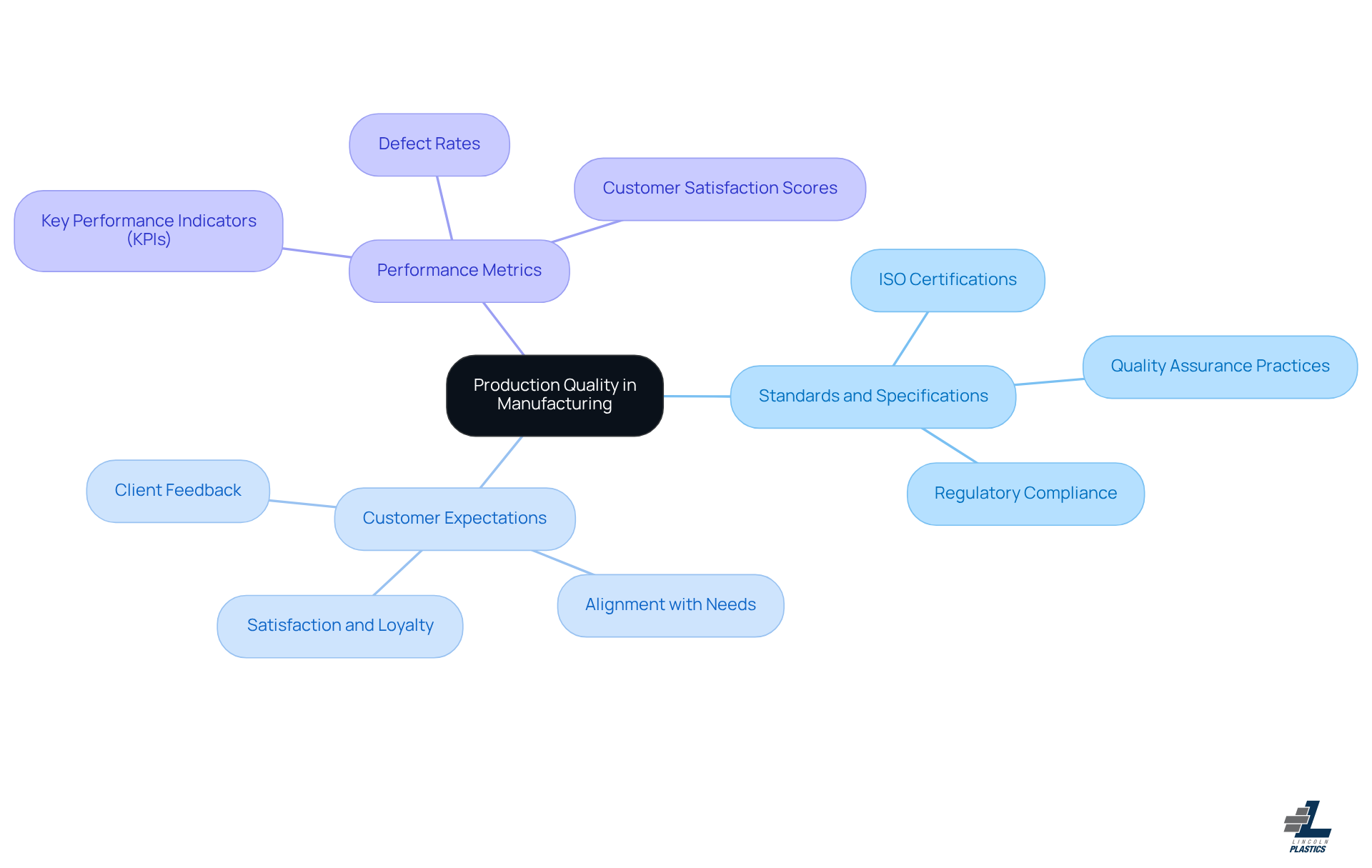
Assess Your Current Workflow
To effectively assess your current workflow, let’s consider a few steps together:
- Map Out the Procedure: Start by creating a flowchart that outlines each stage in your manufacturing workflow—from raw material procurement to final product delivery. This visual will help you get a .
- Identify Bottlenecks: Take a good look at your flowchart to spot any stages where delays or quality issues pop up. Common bottlenecks might come from equipment hiccups, labor shortages, or inefficient processes. Did you know that 90% of leaders in manufacturing say automation is key to tackling these challenges?
- Gather Data: Now, let’s collect some data. Look at manufacturing times, defect rates, and how resources are being used. This info will give you a solid base for your assessment and help you spot patterns that show where improvements are needed.
- Engage Employees: Don’t forget to involve your team in this evaluation! Employees often have firsthand insights into daily challenges and can suggest valuable improvements. Industry experts agree that engaging with employees leads to better strategies grounded in real-world experience.
By thoroughly assessing your current workflow, you can uncover specific areas that need a little TLC, which ultimately teaches you how to improve quality in manufacturing and boost operational efficiency. So, what do you think? Ready to dive in?
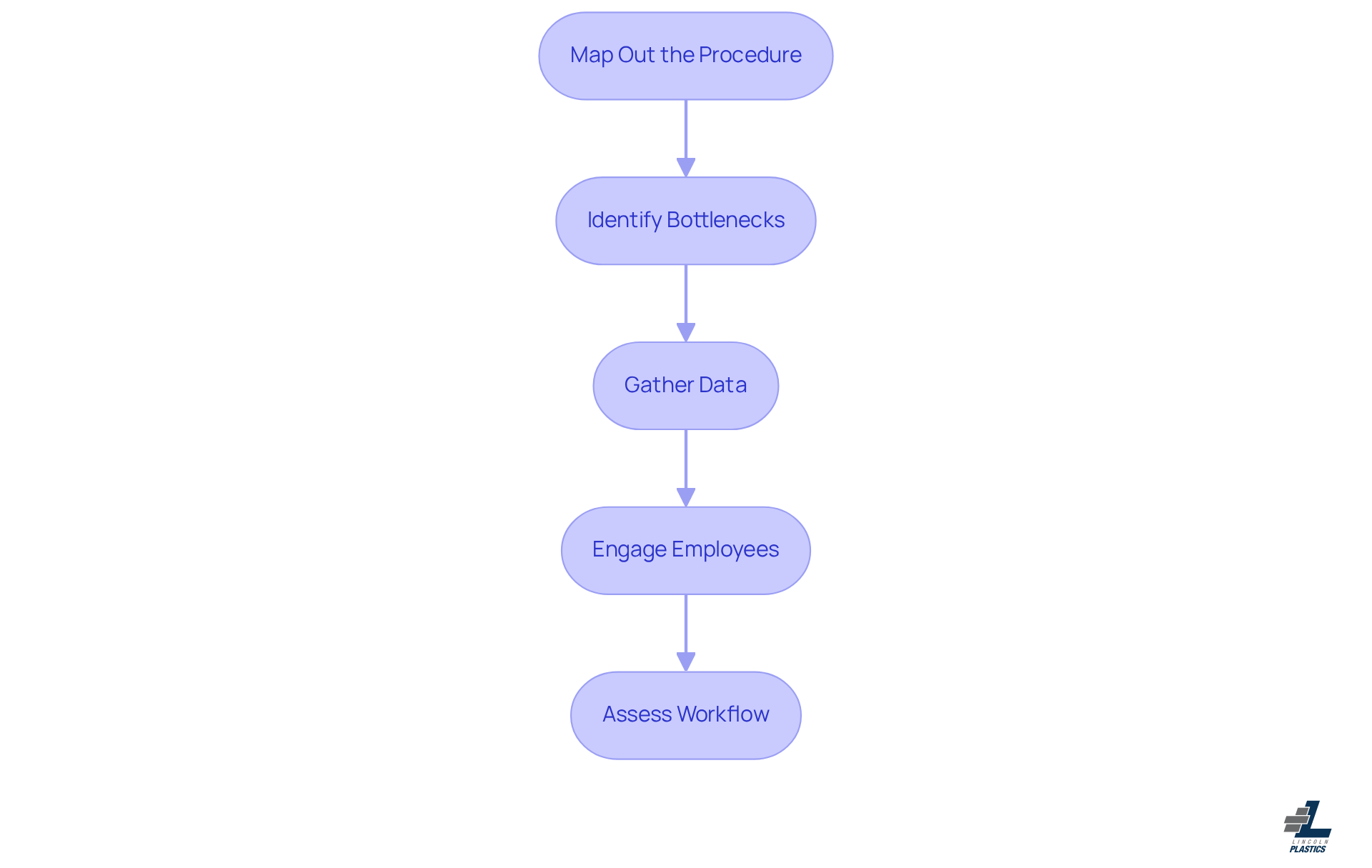
Remove Unneeded Processes
To cut out unnecessary processes in manufacturing, let’s explore some strategies that can really make a difference:
- Evaluate Each Step: Take a good look at your workflow. Ask yourself—does each process really contribute to quality or efficiency? If not, it might be time to rethink it.
- Implement Lean Principles: Have you heard of lean manufacturing? It’s all about finding and eliminating waste. Techniques like 5S (Sort, Set in order, Shine, Standardize, Sustain) can seriously boost your operational efficiency. And don’t forget about innovative solutions like Lincoln Plastics' Flexiduct. It comes in 6’ pre-split lengths and is super easy to install. This can really help with managing cords and cables, making your workplace safer and more productive by that disrupt workflow.
- Test Changes: Before diving into any big changes, why not run some small-scale tests? This way, you can see how removing certain procedures can inform you on how to improve quality in manufacturing and efficiency. It’s all about making adjustments based on what works in the real world.
- Document Changes: Keep track of any workflow modifications you make. This documentation is key for continuous improvement and helps you see how effective your changes are over time.
By zeroing in on those redundant tasks and bringing in effective solutions like Flexiduct, OEMs can discover how to improve quality in manufacturing and create a more efficient production environment. This can lead to better productivity and happier customers. As Zakk Traynor, a Senior M&D Consultant, puts it, "Embracing lean methods has the potential to simplify operations, reduce expenses, and enhance productivity," especially when paired with innovative tools like Flexiduct. So, what do you think? Ready to streamline your processes?
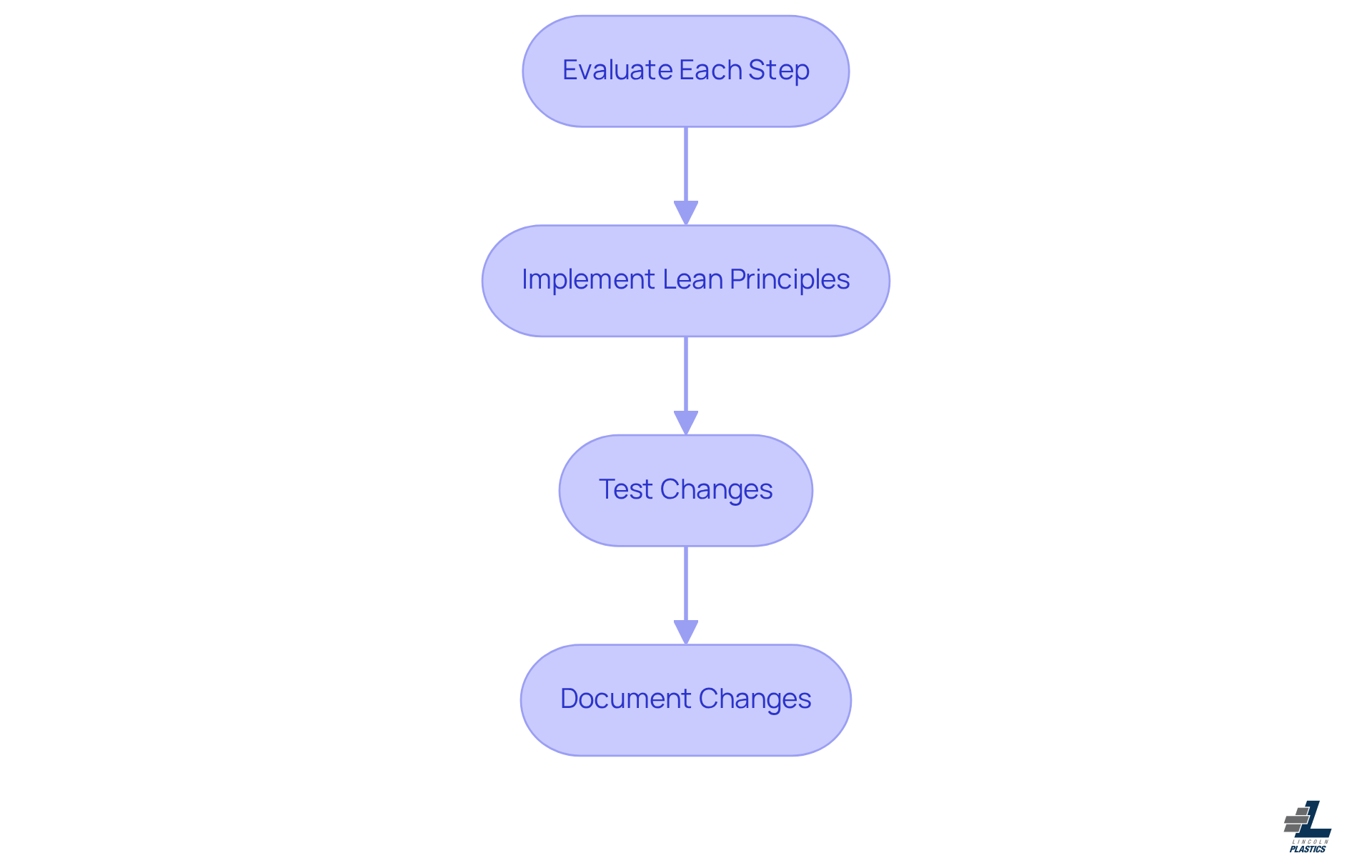
Boost Worker Training
To enhance worker training and improve manufacturing quality, let’s explore some strategies you might find helpful:
- Identify Training Needs: Start by assessing the skills required for each role in the production process. This means pinpointing any gaps in current employee capabilities so you can tailor training effectively.
- Develop Training Programs: Think about creating comprehensive training initiatives that cover essential skills, safety protocols, and control measures. Incorporating digital tools and blended learning approaches can really boost engagement and help with knowledge retention. Plus, with recent developments like AI-based training systems, you can provide personalized learning experiences that cater to individual needs.
- Utilize Experienced Personnel: How about leveraging the expertise of seasoned employees to mentor newer staff? This not only fosters a culture of continuous learning but also ensures that valuable knowledge is passed down, enhancing overall team competency.
- Evaluate Training Effectiveness: It’s important to regularly assess the impact of training programs through performance reviews and employee feedback. This continuous assessment helps ensure that training aligns with enhancement objectives and adapts to changing manufacturing requirements. For instance, using skills assessments can pinpoint specific areas where employees may need a bit more support.
By prioritizing these training strategies, OEMs can significantly boost their workforce's capabilities, which will help them understand how to improve quality in manufacturing and enhance operational efficiency. As industry leaders like Henry Ford have pointed out, effective training is crucial for minimizing production errors and fostering a motivated workforce, ultimately driving long-term success. Additionally, take a look at case studies, like the collaboration between Holcim and Abilitie, which show how tailored training programs can lead to better outcomes in manufacturing. So, what do you think? Ready to enhance your training approach?
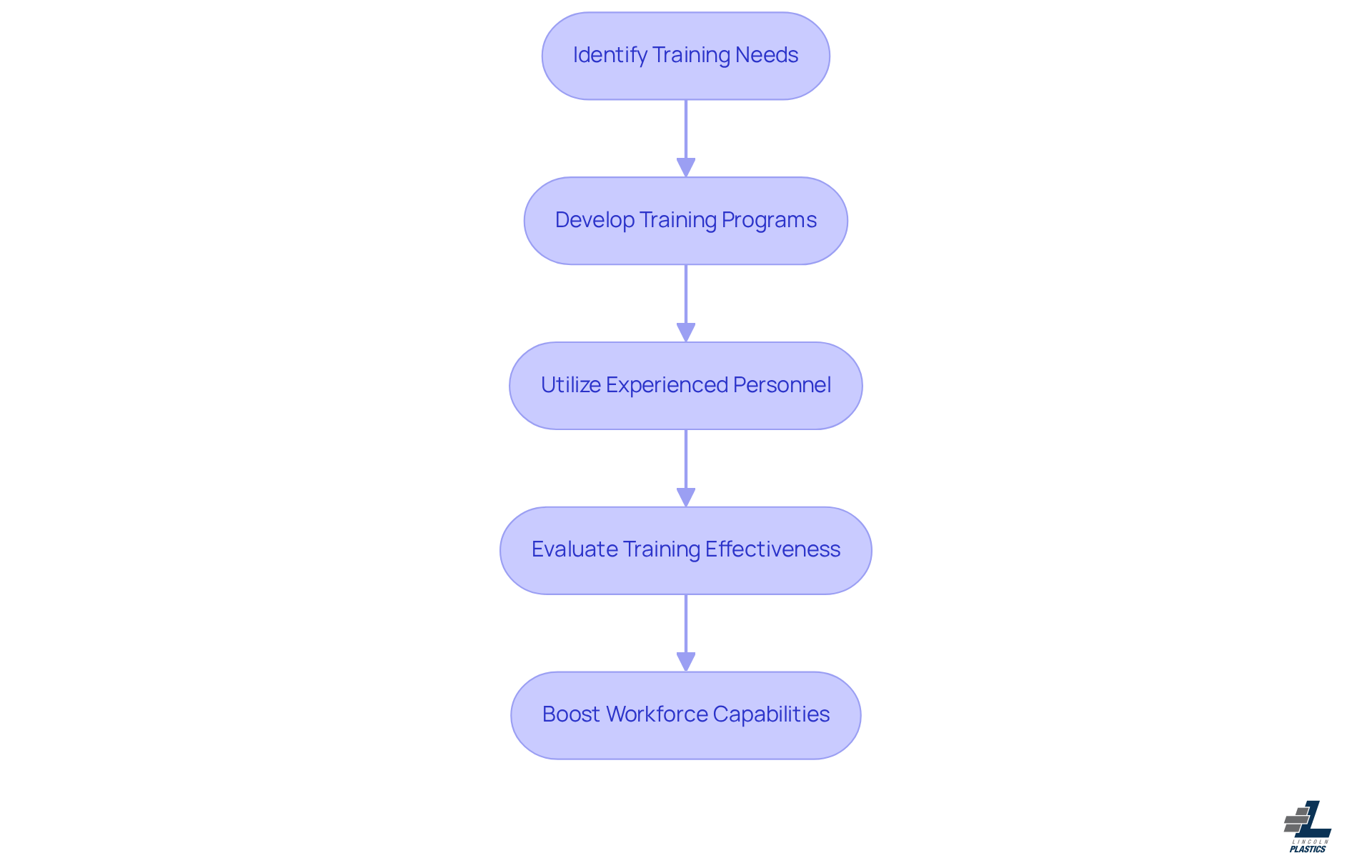
Create Quality Goals
To set quality goals that really work, let’s break it down into a few simple steps:
- Set SMART Goals: Start by crafting goals that are Specific, Measurable, Achievable, Relevant, and Time-bound. This way, you have a clear direction, making it easier to .
- Involve Stakeholders: Get everyone on board! Engaging employees at all levels in the goal-setting process helps them feel a sense of ownership and accountability. This is key for making sure things go smoothly.
- Align with Business Objectives: Make sure your performance goals line up with your broader business objectives. Think about things like boosting customer satisfaction and improving operational efficiency. When everything’s in sync, it’s easier to prioritize initiatives that drive success.
- Monitor Progress: Keep an eye on how things are going. Regularly check in on your objectives and be ready to tweak your strategies if needed. Staying observant allows you to act quickly and keeps everyone focused on those excellence goals.
By setting clear and actionable quality goals, OEMs can truly understand how to improve quality in manufacturing and foster a culture of continuous improvement. This is how you drive excellence throughout your operations!
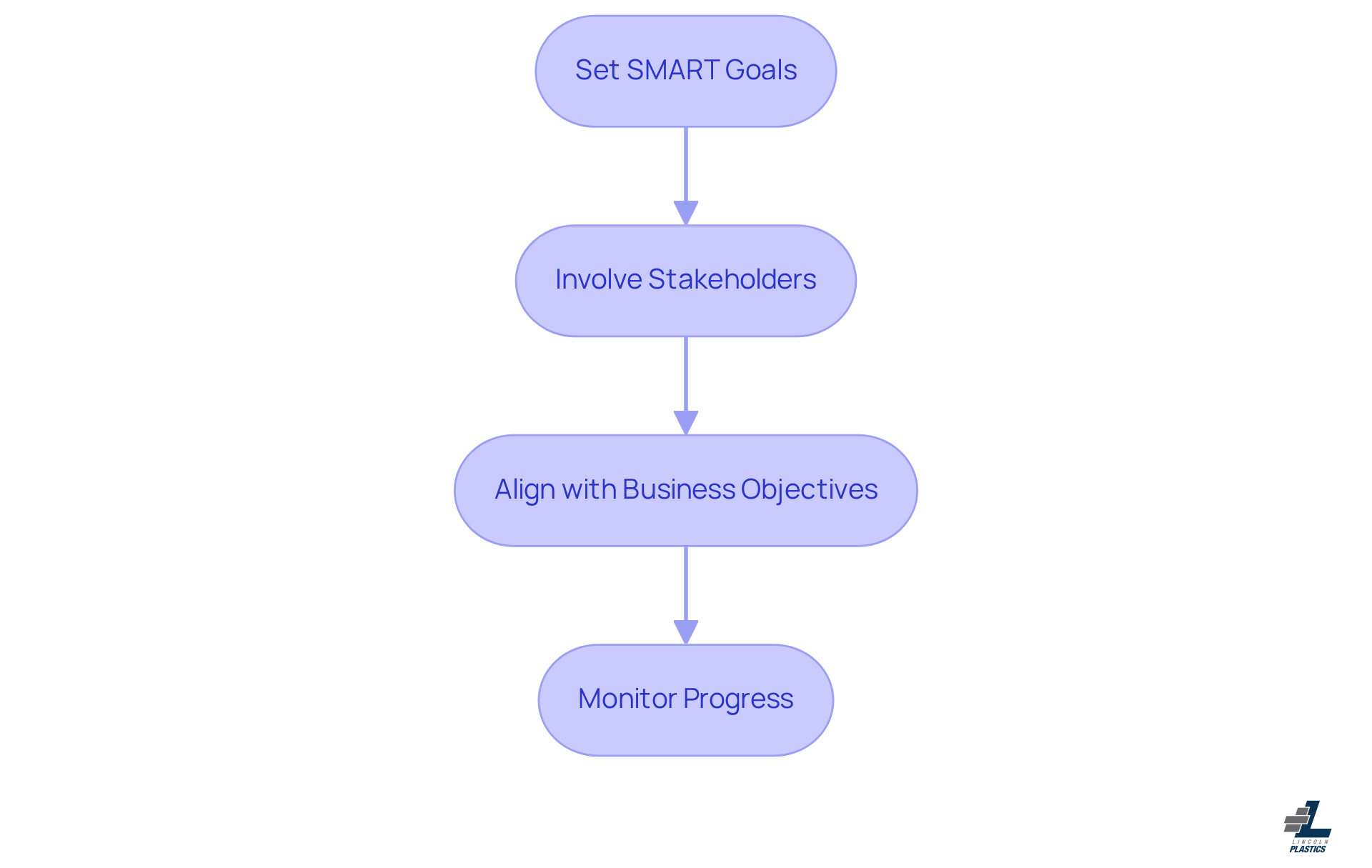
Cut Production Waste
If you're looking to cut down on production waste, OEMs have some great strategies to consider.
First up, how about conducting a waste audit? This means taking a good look at your manufacturing process to —think excess materials, energy use, and time lost. Regular audits can shine a light on areas for improvement and give you a solid baseline to work from.
Next, let’s talk about recycling programs. Setting up initiatives for scrap materials not only helps reduce waste but can also save you some cash. Just look at companies like Interface—they’ve embraced circular economy principles by using recycled materials, showing how impactful these programs can be for cutting down waste.
Now, optimizing material usage is key. By using advanced planning and scheduling tools, you can make sure you’re using materials efficiently, which is a big win for reducing excess. Plus, adopting Just-In-Time (JIT) production can help align your production schedules with demand, further slashing inventory waste.
Don’t forget about your employees! Encouraging their input on waste reduction can lead to some innovative ideas based on their firsthand experiences. When employees feel involved, it boosts morale and gives them a sense of ownership over improvements. The Kaizen philosophy, focusing on continuous improvement, can really help here.
You might also want to consider the 5S methodology—Sort, Set in order, Shine, Standardize, Sustain. This approach can help tidy up your workplace, cut down on wasted time, and improve safety, all of which contribute to better efficiency.
And let’s not overlook technology! Embracing tech can really support your lean manufacturing goals by streamlining processes and optimizing resource allocation.
By focusing on these strategies, OEMs can discover how to improve quality in manufacturing while also trimming down waste, boosting operational efficiency, and raising product standards—all while aligning with today’s sustainability goals. Did you know that organizations implementing lean principles can see defect rate reductions of up to 80% and lead time improvements of 70-90%? That’s some serious effectiveness right there!
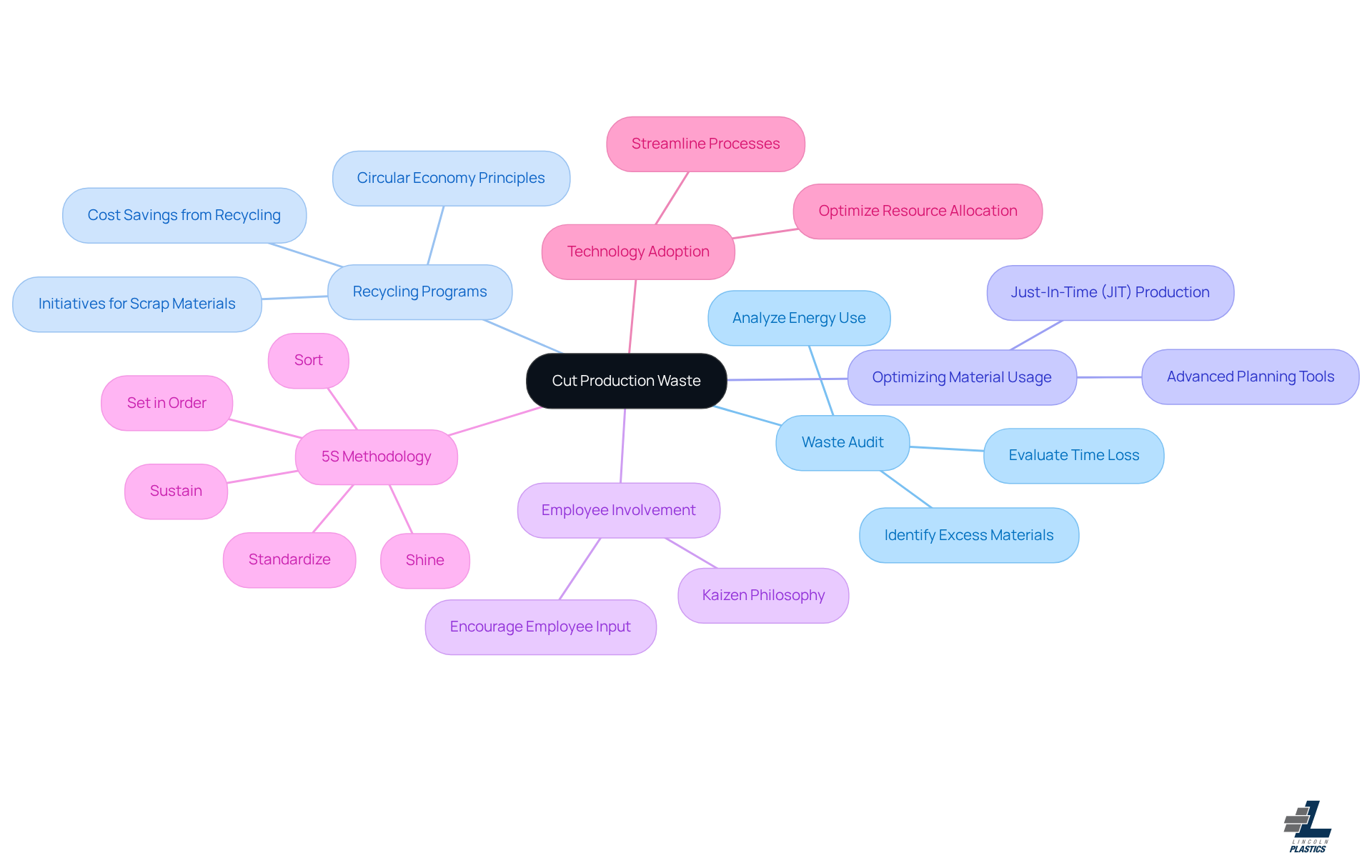
FAQs About Improving Production Quality
Here are some frequently asked questions about improving production quality:
- What are the most frequent problems in manufacturing?
Common quality issues include dimensional inaccuracies, surface defects, and material inconsistencies. These can really impact product performance and customer satisfaction. At Lincoln Plastics, we work closely with OEMs to ensure that all products meet strict performance standards. We even have special checks for ‘fit and function’ and adhere to tolerances that depend on the material and application. - How can I assess the standard of output?
Measuring production quality effectively can be done through key performance indicators (KPIs) like defect rates, customer complaints, and return rates. These metrics give valuable insights into the manufacturing process and highlight areas for improvement. You might have heard of methodologies like (SQC) and Six Sigma. Six Sigma aims for no more than 3.4 defects per million opportunities. At Lincoln Plastics, we use various types of check gauges to ensure a proper end-use fit, reinforcing our commitment to precision. - What role does employee training play in enhancing standards?
Employee training is super important for quality enhancement. Well-trained personnel are better at producing high-quality products and can spot potential issues early in the production process. This helps reduce defects and improves overall efficiency. Our strong assurance system includes dedicated training to make sure our team is equipped to maintain high standards. - How frequently should I assess my performance objectives?
Regular reviews of quality goals are essential. We recommend conducting assessments at least quarterly. This practice ensures that goals stay relevant and achievable, adjusting to any changes in production methods or market requirements. This aligns with the continuous enhancement philosophy highlighted in Six Sigma, which promotes ongoing assessment and modification of performance objectives. At Lincoln Plastics, we keep a focused record for each plastic profile, documenting essential in-process inspections and run documentation to assist this review. - What are some quick wins for enhancing standards?
Quick wins for enhancing quality include streamlining processes, improving employee training programs, and implementing immediate waste reduction strategies. These actions can lead to significant improvements in product standards and operational efficiency. Plus, we can easily obtain colors that match your Pantone requirements for consistency among producers, ensuring that customization doesn’t compromise standards. We’ve developed many types of conduit for various electrical and specialty plastic applications, showcasing our ability to meet diverse needs.
By addressing these FAQs, OEMs can gain a clearer understanding of how to improve quality in manufacturing. This is all supported by established methodologies and best practices, as shown by Lincoln Plastics' commitment to quality assurance.

Conclusion
Improving quality in manufacturing isn’t just about following standards; it’s about creating a systematic approach that touches every part of the production process. Think about it: by defining production quality through industry benchmarks, understanding what customers really want, and using performance metrics, OEMs can craft a strategy that boosts product reliability and keeps customers happy.
So, what are the key steps?
- Assess your current workflows to spot inefficiencies.
- Cut out unnecessary processes and ramp up worker training to make sure your team has the skills to uphold high standards.
- Set SMART quality goals and get stakeholders involved to foster a culture of continuous improvement—this is crucial for long-term success.
- Implement waste reduction strategies and tap into technology to amp up operational efficiency.
Ultimately, the journey to better manufacturing quality hinges on a commitment to excellence at every level of the organization. By embracing these best practices, OEMs can not only lift their production standards but also gain a competitive edge in the market. Remember, the path to quality improvement is ongoing, and taking these steps today can lead to big benefits down the line. So, why wait? Let’s get started on this journey together!
Frequently Asked Questions
What is production quality in manufacturing?
Production quality in manufacturing refers to how well a product meets specific requirements and customer expectations, including factors like material integrity, dimensional accuracy, surface finish, and functional performance.
How can industry standards impact production quality?
Industry standards, such as ISO certifications, serve as benchmarks for quality assurance. For example, Lincoln Plastics is certified to the ISO 9001 standard, which enhances credibility and ensures adherence to strict management practices for better product consistency and reliability.
Why is customer feedback important in manufacturing?
Customer feedback is vital for understanding client standards and perceptions, which helps align manufacturing activities with customer needs, ultimately boosting satisfaction and loyalty.
What are performance metrics, and why are they important?
Performance metrics, such as defect rates, return rates, and customer satisfaction scores, provide quantifiable data to assess standards effectively. They guide ongoing improvement efforts and help catch defects early, reducing costs tied to rework and returns.
What steps can be taken to assess current manufacturing workflows?
To assess current workflows, one can map out the procedure using a flowchart, identify bottlenecks, gather data on manufacturing times and defect rates, and engage employees for insights into daily challenges.
What common bottlenecks might be found in manufacturing workflows?
Common bottlenecks may arise from equipment issues, labor shortages, or inefficient processes that can lead to delays or quality problems.
How can engaging employees improve manufacturing processes?
Engaging employees in the evaluation process can lead to better strategies grounded in real-world experience, as they often have firsthand insights into daily challenges and can suggest valuable improvements.
List of Sources
- Define Production Quality in Manufacturing
- Mastering Quality Control in Manufacturing: A Comprehensive Guide (https://montblanc.ai/en/blog/mastering-quality-control-in-manufacturing-a-comprehensive-guide)
- Case Study - Thermax | Trusted Partner in Energy Transition (https://thermaxglobal.com/case_studies)
- Assess Your Current Workflow
- Manufacturers Seek Flexibility, Quality, Efficiency and Supply Chain Visibility (https://advancedmanufacturing.org/manufacturing-engineering/manufacturers-seek-flexibility-quality-efficiency-and-supply-chain-visibility/article_464cf519-c0f4-4506-8dea-e656b000b1a7.html)
- Lean Manufacturing Quotes: Here's 12 More to Inspire You (https://swipeguide.com/insights/12-lean-manufacturing-quotes-to-inspire)
- 18 Lean Manufacturing Quotes (#5 is Amazing) (https://newcastlesys.com/blog/bid/337009/lean-manufacturing-quotes-for-education-and-inspiration)
- Lean Manufacturing Quotes - (https://supplychaintoday.com/lean-manufacturing-quotes)
- 90+ Stats About Logistics, Manufacturing, and Automation You Must Know (2025 Edition) (https://cyngn.com/blog/90-stats-about-logistics-manufacturing-and-automation-you-must-know-2025-edition)
- Remove Unneeded Processes
- Streamline your manufacturing for maximum impact: unleash the power of lean (https://crainscleveland.com/crains-content-studio/lean-manufacturing-streamlines-processes-and-slashes-costs)
- Boost Worker Training
- 18 of Our Favorite Quotes About the Power of Training & Development - Abilitie (https://abilitie.com/blog/2018-7-6-18-of-our-favorite-quotes-about-the-power-of-training-development)
- 75 Inspirational Manufacturing Quotes That Will Boost Your Business — Navigate Content (https://navigatecontent.com/blog/inspirational-manufacturing-business-industry-quotes)
- Five Reasons Why Training is Important for Manufacturing | iTacit (https://itacit.com/blog/five-reasons-why-training-is-important-for-manufacturing)
- The Top 200 Manufacturing & Operations Quotes (https://praxie.com/top-business-operations-manufacturing-quotes)
- Create Quality Goals
- 10 Practical Examples Of SMART Goals For Work [2024] (https://officernd.com/blog/examples-of-smart-goals-for-work)
- Top 10 Quality Control Quotes to Inspire Your Team (https://movley.com/blog/top-10-quality-control-quotes-to-inspire-your-team)
- Cut Production Waste
- Manifestly Checklists | Lean Manufacturing: Effective Waste Reduction Strategies 2025 (https://manifest.ly/blog/lean-manufacturing-effective-waste-reduction-strategies-2025)
- What is the Goal of Lean Manufacturing? Modern Strategies to Reduce Waste (https://gocious.com/blog/what-is-the-goal-of-lean-manufacturing-modern-strategies-to-reduce-waste)
- FAQs About Improving Production Quality
- Statistical Quality Control in Manufacturing | Research Starters | EBSCO Research (https://ebsco.com/research-starters/business-and-management/statistical-quality-control-manufacturing)


